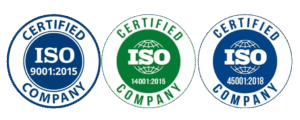The Australian Packaging Covenant Organisation’s 2030 Strategic Plan (covering July 2024–June 2030) sets a bold agenda for the Australian packaging industry: increased circularity, stronger incentives for sustainable design, deeper collaboration across supply chains, and meaningful performance gains. documents.packagingcovenant.org.au+2apco.org.au+2
At Carewell Group, we believe this isn’t simply “industry policy” – it’s a guiding framework for how we design, supply and support packaging, logistics and safety systems for our clients. This blog outlines how we are aligning our operations, innovations and services to support this future.
Understanding the APCO 2030 Strategic Plan
The Plan recognises that Australia’s previous pace toward the national packaging targets is not sufficient, and it introduces structural levers to accelerate change. Key components include:
- A new eco-modulated membership fee model from FY 2026/27 onwards, whereby members pay according to the volumes and types of packaging they place on market (with higher fees for materials harder to recycle). apco.org.au
- Investment of funds raised into downstream systems: building collection, sorting, re-processing infrastructure and end-market capacity. packaging-gateway.com+1
- Introduction of additional indicators beyond the 2025 National Packaging Targets, including the aim to reduce up to 1 million tonnes of packaging material from landfill by 2030. packagingnews.com.au
- A systemic view of packaging: covering design, procurement, supply-chain, recovery, reuse – not just disposal. apco.org.au
- A recognition that “business as usual” will not suffice — innovation in materials, design and supply chain models is required. ANZRP
Why This Matters for Carewell Group and Our Clients
For a full-service provider like Carewell, which handles packaging supply, industrial & safety, logistics and 3PL, the implications of the APCO Plan are wide-ranging:
- Design and material choice become strategic: Packaging formats we supply (trays, mailers, poly-bags, wraps, tapes and storage solutions) will increasingly need to align with circular-economy criteria: recyclability, reuse, minimal waste and recoverability.
- Supply-chain integration is key: The Plan emphasises the full lifecycle of packaging. Our logistics and 3PL services become part of the value proposition — supporting reverse-flow, reuse, return logistics, and recovery systems.
- Innovation creates opportunity: As brand owners and organisations look to meet the Plan’s expectations, they will rely on partners who can help them transition. Carewell is positioned to be that partner.
- Competitive positioning for our clients: Clients who choose Carewell gain access to packaging and logistics services structured with the future in mind — i.e., aligned with the APCO Plan, which may well set the regulatory and market standard of the coming years.
- Risk mitigation: By aligning in advance with the frameworks the industry is moving toward, clients reduce the risk of stranded packaging formats, cost shocks from redesign, or supply-chain disruption from new regulation.
How Carewell Group Is Acting on the APCO 2030 Plan
Here are how we are translating the strategic ambitions of the Plan into action within our business and for clients:
1. Packaging Format Review & Optimisation
We are systematically reviewing our product portfolios (e.g., trays, mailers, poly-bags, wraps, tapes) to assess: recyclability, reuse potential, recycled content, material complexity, recovery pathway. We are then working with suppliers to shift toward formats that align with circularity objectives.
2. Introducing Reusable & Returnable Solutions
We are developing logistics and packaging solutions that focus on reuse cycles — for example, multi-trip trays/containers, return schemes, refurbishment rather than single-use. These support the Plan’s focus on reduction and reuse, not just recycling.
3. Materials Innovation & Recycled Content
We are prioritising packaging that contains higher recycled content, fewer virgin materials, fewer complex composites, and is designed for recovery. For instance, we are exploring materials and coatings that are compatible with existing recycling infrastructure, keeping in mind the downstream investments signalled by APCO.
4. Supply Chain & Logistics Integration
Because the Plan emphasises value-chain rather than siloed activity, we are integrating our logistics and 3PL operations with packaging strategy — packaging doesn’t stop at dispatch. Return, recovery, reuse, storage all matter. Clients can rely on our full-service approach.
5. Client Advisory & Transition Support
We are offering our clients transition services: audits of packaging formats, supply-chain mapping, recommendation of next-gen materials, logistics/return design, metrics for recycled content and recovery. These services support clients preparing for a future shaped by the APCO Plan.
6. Measurement & Reporting
Though full regulation is still under reform, we are establishing internal systems to track material volumes, recycled content, reuse cycles and packaging recoverability. This aligns with the Plan’s direction toward new indicators and accountability for brand owners and their packaging suppliers.
Practical Steps for Clients (and Your Business)
To get ahead in light of the APCO 2030 Plan, here are steps you (or your clients) can take:
- Audit packaging portfolios now: Map all packaging types, materials, reuse/return potential, recycled content and end-of-life recovery path.
- Set goals aligned with circular economy: For example, increase percentage of reusable packaging, increase recycled content, simplify materials, reduce one-way packaging.
- Engage packaging/design suppliers early: Specify criteria tied to recoverability, reuse potential, compatibility with downstream systems.
- Advance logistics/return flows: If your packaging can support multiple uses or return cycles, make that part of the design from the start — and ensure logistics supports it.
- Communicate your strategy: With stakeholders, clients, buyers — show that you’re aligned with the APCO Plan, taking steps toward circular packaging.
- Prepare for eco-modulation: As the Plan establishes a fee structure tied to packaging impact (materials, volumes and recoverability), understanding the cost exposure and opportunities is important.
- Track metrics: Build internal dashboards for packaging volumes, recycled content %, reuse cycles, return volumes and recovery performance. These will become increasingly important.
The Bigger Picture & Why Innovation Matters
The APCO 2030 Plan acknowledges that simply continuing current practices won’t deliver the gains Australia needs. It is essentially calling for system change — innovation in materials, logistics, design, business models and supply chains. For Carewell Group and our clients that means: embracing packaging as part of a circular system rather than as a disposable cost.
Innovation isn’t optional—it’s strategic. Whether it’s reusable industrial crates, mailers made from recycled content, minimal-waste transport packaging, or logistic systems that support return flows, these are the opportunities ahead. Businesses that embrace this now will be ahead of regulation, ahead of cost exposure, and ahead of competitors.
Final Thoughts
The APCO 2030 Strategic Plan is setting the direction for Australia’s packaging industry over the next six years—and it matters. For a company like Carewell Group, it’s not just about compliance; it’s about leadership. We are aligning our design, supply, logistics and service offerings with the future state of packaging: circular, measurable, innovative, business-driving.
If you’re ready to explore how we can help your business align with this future—whether through packaging redesign, logistics integration, reuse-systems or reporting—reach out. The future is circular. Let’s build it together.
Carewell Group Pty Ltd
Unit 27/191 McCredie Road, Smithfield, NSW 2164
Phone: +61 0477 123 699
Email: sales@carewellgroup.com.au | info@carewellgroup.com.au | logistics@carewellgroup.com.au









